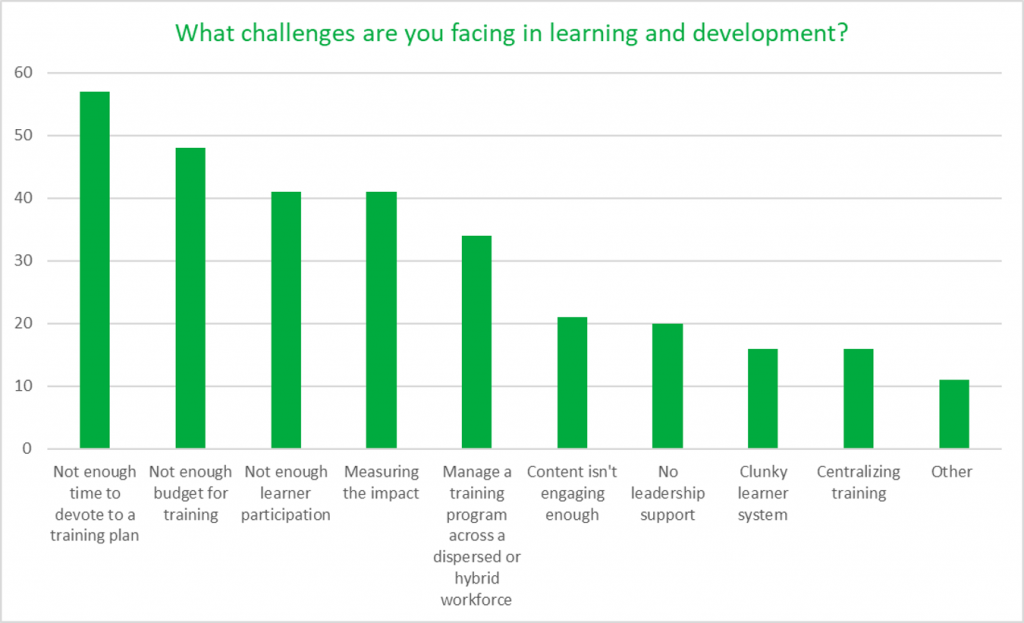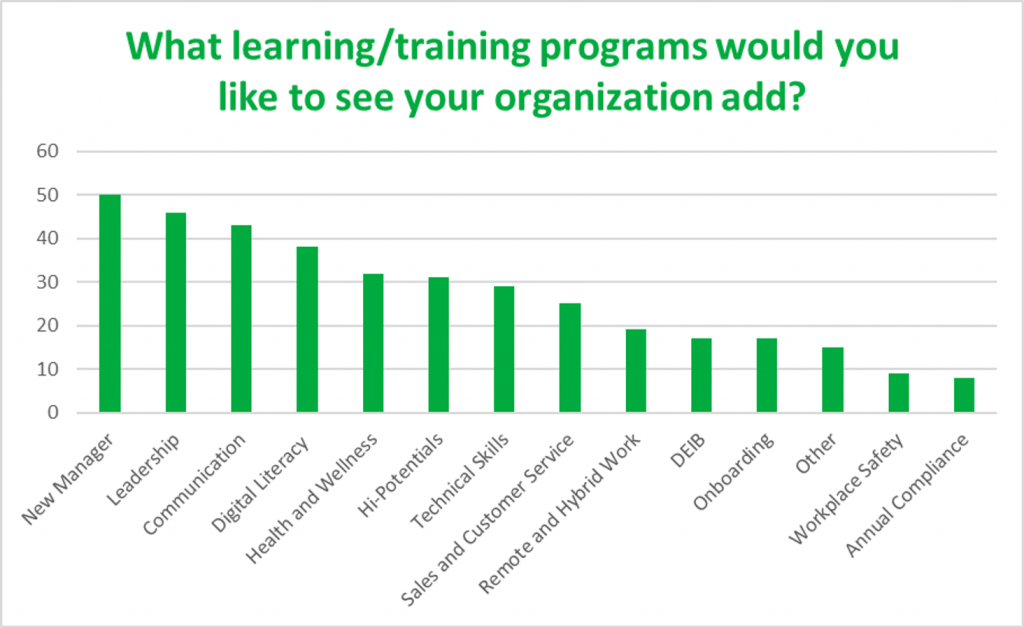Talent & Technology Keeping Executives Up at Night
In a recent C-Suite Pulse Survey by PwC, a compelling narrative of cautious optimism for the economy in 2024 emerges, with only 17% of executives anticipating a recession in the next six months, down from 35% in 2022. The survey also sheds light on challenges facing business today, specifically the top concerns keeping executives awake at night including:
1. Cybersecurity Risks
2. Economic Climate
3. Talent Acquisition and Retention
4. New Technologies Making Current Business Model Obsolete
“The Great Disruption” of 2024
In 2024, leaders have the critical task of addressing persistent gaps between senior leaders and employees, focusing on transparency, trust, employee performance, productivity, and company culture. This highlights two predominant organizational challenges shaping strategic agendas: Technology and Talent. Navigating these challenges is essential for leaders to foster a cohesive and high-performing workplace.
I’m coining the phrase “The Great Disruption” in 2024 which encapsulates the competing priorities faced by the C-suite – a delicate balance between tech advances, cost-cutting, and talent retention and development. This disruption underscores the need for organizations to reevaluate their approaches and prioritize elements that foster resilience and growth.
When you start reading that worker productivity is declining faster than anytime in the past 75 years and also see that ChatGPT was the fastest technology ever to hit 100M users, (just under 2 months – for reference, Facebook took 4.5 years to hit this number) it’s easy to see why this is a year where “Something has to give” in the battle for top talent skilled enough to properly leverage technology to achieve more, faster.
Below are the top 6 L&D and HR trends for the future that will are shaping 2024 – The Year of the Great Disruption:
1. CEO’s Concerns and Aspirations: The Talent Imperative
2. Learner Engagement and Elective Learning
3. Leadership Development & Digital Literacy
6. Value and Consolidation In L&D Partners
1. The Talent Imperative: CEOs’ Concerns and Aspirations
The talent landscape remains a primary focus for CEOs, with an overwhelming 57% identifying talent acquisition and retention as their foremost challenge. In the wake of the “Great Resignation,” where employees seek roles with meaningful work and positive organizational cultures, this challenge underscores the imperative for businesses to rethink their talent strategies. Add to this that the types of organizational cultures – in-person, hybrid, fully-remote – are becoming more fragmented as there is still no great answer to the question, “how do I best balance the WFH my employees want with the RTO plan our executives want to achieve the right mix of productivity and engagement?” The reality is that the best organizational culture examples are often great to read about but do not offer a “one-size-fits-all” approach and many organizations are still struggling with how to solve for things like meaning and purpose at work four years post-covid.
What’s one thing we do know drives engagement and culture? Upskilling. Employees now consider opportunities to learn and grow as THE #1 driver of great work culture up from #9 in 2019.
Luckily, 43% of CEOs are cognizant of the importance of upskilling and reskilling their existing workforce. But our HR and L&D professionals are busier than ever, so finding the time to create in-house programs remains challenging. This was the driving force behind incorporating BizLibrary’s personalized upskilling feature, BizSkills into our LMS platform. BizSkills takes the guesswork out of mapping content to vital skills needed for the most in-demand job titles today, ensuring that your workforce remains competitive and adaptable.
2. Learner Engagement and Elective Learning: A Balancing Act
While organizations recognize the importance of learning and development, there’s a challenge in promoting elective learning. A recent BizLibrary survey we conducted of L&D and HR leaders shows 50% of organizations admit they are not promoting elective learning as much as they would like. This discrepancy suggests a need for organizations to better communicate the value of continuous learning and provide incentives for employees to pursue elective courses.
That’s why we created BizAI, a learning assistant, who powers BizLibrary products to give learners and administrators alike an enhanced approach to online learning. Features include an AI-powered Learner Onboarding Modal and Recommendation Engine, which caters to individual learning preferences, promoting higher engagement through a more personalized experience. We also now offer bi-monthly “skill booster” emails that enable employees to take control of their development by delivering new content to their inboxes focused on the most in-demand skills.

Moreover, the survey found that for HR and L&D professionals “not enough learner participation” is one of the top 3 learning and development challenges. To delve deeper into this challenge, a breakdown of the types of elective learning that employees desire can provide valuable insights. Our survey showed that 28% of employees express a keen interest in leadership development courses, while 22% are eager to enhance their digital skills. Understanding these preferences can guide organizations in tailoring their elective learning offerings to align with employee aspirations.
The survey also reveals that 67% of employees are more likely to engage with elective learning opportunities if they are presented in bite-sized, easily digestible formats. This aligns with the trend of shorter attention spans, indicating a growing preference for microlearning and nanolearning approaches.
3. L&D Professionals’ Focus: Leadership Development and Digital Literacy
Within organizations, L&D professionals are gearing up to address the challenges highlighted by CEOs. 43% of these professionals express a desire for a formal leadership program, emphasizing the importance of nurturing leadership skills at all levels. This shift is particularly noteworthy as new managers, largely millennials, step into leadership roles, and baby boomers retire, leaving a knowledge gap.
Simultaneously, the digital revolution is reshaping workplaces. 30% of L&D professionals are keen on digital literacy and transformation initiatives. The emphasis on equipping employees with the skills needed to thrive in a tech-driven environment reflects the broader digital transformation sweeping across industries.
However, our survey forthcoming reveals a notable obstacle: 42.9% of L&D professionals struggle with learner participation. This highlights the need for innovative and engaging learning solutions to capture the attention of a workforce that is experiencing shorter attention spans and a desire for more flexible learning formats.
4. Generative AI’s Impact: A Force for Productivity and Automation
Generative AI is poised to disrupt the job market significantly. McKinsey & Company’s study suggests that by 2030, up to 30% of jobs could be automated by this technology. This coincides with the challenges highlighted in the survey – lower productivity and engagement in the American workforce.
McKinsey estimates that generative AI could boost global productivity by more than $4 trillion annually. A lot of the conversations at the intersection of talent & technology we’re hearing center around productivity gains from AI-driven solutions. That said, for employees to use Generative AI tools, they need to understand them. BizLibrary is focused on curating content around GenAI education, which you can now preview here.
The impact of generative AI extends beyond automation. A deeper examination of industry-specific applications reveals that 64% of organizations in manufacturing and logistics anticipate significant improvements in operational efficiency through the implementation of AI-driven automation. This showcases the diverse ways in which generative AI is poised to reshape industries and drive transformative changes.
This year, HR is undergoing a transformative shift, evolving from traditional support roles to strategic positions as creators, developers, and consultants. The changing landscape positions HR teams as consultants, product managers, designers, and advisors, reflecting a shift from merely offering support to actively contributing by building and analyzing, enabled greatly by the capabilities of Generative AI as well as AI-enabled skills development platforms and tools that can help automate a lot of the day-to-day minutiae of the job.
5. Leadership Skills for 2024: A New Paradigm
In the ever-changing landscape of work, the skills demanded of leaders are evolving. Effective leaders in 2024 need to embody more soft skill qualities such as communication, authenticity, empathy, coaching and feedback, collaboration and teamwork, and the ability to lead remotely and manage through change. This shift emphasizes the importance of human skills in leadership, moving away from traditional metrics like micromanaging and focusing more on results and outcomes. BizLibrary is doubling down on expert-led leadership content via our Experts Insights series – check out a playlist of some of our newest releases here.
To delve deeper into the specific challenges faced by leaders in fostering these skills, a breakdown of the most sought-after leadership qualities can provide valuable insights. Our Trends in Training survey revealed that 78% of organizations prioritize communication skills as the most critical leadership trait. This underscores the central role of effective communication in navigating complex business environments, fostering collaboration, and inspiring confidence among team members.

Additionally, 65% of organizations highlight the importance of empathy in leadership. In an era where remote work and digital interactions are ubiquitous, empathetic leadership becomes a cornerstone for building strong and cohesive teams. Leaders who can understand and respond to the diverse needs and challenges faced.
6. The Search for Value and Increase in Consolidation of L&D Partners
The successful transformation of businesses continues to be hindered by challenges in implementing technology. While companies are willing to make initial investments, extracting tangible value from newly adopted technology remains a formidable obstacle. A significant 88% of CFOs express difficulty in realizing measurable value from their tech investments, followed closely by challenges in updating their operating models to align with their new vision (85%), covering the financial implications of acquiring new technology (85%), and providing adequate training for the workforce (84%) to effectively engage with the new technological tools.
Not surprisingly then, one of the biggest trends in HR is that professionals will be scrutinizing their external L&D partners more closely in hopes of finding ways to spend more efficiently and partner with vendors who offer value and an “all-in-one” approach to development. With an uncertain economy, only 25.7% of Learning and Development (L&D) professionals are anticipating a boost in their budgets.
That said, in an effort to “get more from their money” a notable 44.4% of organizations we surveyed are actively pursuing partnerships with comprehensive solutions providers within the next year. This trend reflects a strategic move towards consolidating vendors, with an emphasis on finding all-in-one providers capable of addressing compliance, upskilling, and leadership needs. This shift highlights a recognition of the intrinsic value external expertise brings in navigating the dynamic challenges of L&D and HR.
Taking a deeper look into the motivations behind this surge in external partnerships, a thorough analysis reveals that 62% of organizations believe external providers bring a fresh perspective and innovative approaches to the realm of learning and development. This aligns seamlessly with the imperative for agility and adaptability in the face of a rapidly evolving business environment, where conventional approaches may prove insufficient in addressing emerging challenges.
Moreover, a significant 57% of organizations emphasize the importance of gaining access to a broader range of learning resources and expertise as a key driver for seeking external partnerships. This strategic decision signals a clear recognition of the inherent limitations within internal resources and underscores the intentional effort to tap into a diverse pool of knowledge and capabilities. As organizations seek to streamline and fortify their L&D initiatives, the consolidation of vendors and the quest for all-in-one providers emerge as pivotal strategies to navigate the multifaceted landscape of talent development.
Closing Thoughts
As 2024, the year of the great disruption gets underway, L&D leaders must continue to work tirelessly to shape an employee development strategy that will align with C-suite and organizational goals and will provide the kind of employee development organizations must offer in today’s job market if they hope to retain top talent.
The theme of technology and talent helps us understand how important It will be for organizations to have a solid plan on how they’re going to: ensure employees have the training resources needed to adopt and leverage emerging technologies like AI, engage and retain their employees, create new and capable leaders, adjust to largely remote workforces, and adjust their business strategies to future proof their organization – at tall order to say the least.
L&D strategies must also shift and bring a bigger focus to bridging the gap between shortened attention spans and making sure employees are engaged in continuous learning opportunities by adopting digestible, bite-sized learning formats within their elective learning training programs. This comes accompanied by a paradigm shift in leadership skills that emphasizes the need to put soft, or human-centric skills at the forefront of leadership training as younger generations step into these positions.
We’ve also observed that 2024 will bring with it a change in how organizations evaluate their L&D vendors – they will be actively seeking out partnerships with comprehensive solutions providers. This strategic shift acknowledges the value of external expertise in navigating the multifaceted challenges of talent development.
In essence, the trends outlined in this analysis collectively shape the trajectory of organizational strategies in response to the unique challenges that the new year will bring. Aligning HR and L&D priorities with the broader concerns of executives is not not merely a strategic need but more of a compass guiding organization through these changes. As we stand at the intersection of talent and technology, these trends serve as guiding principles for fostering resilience and sustained growth.

